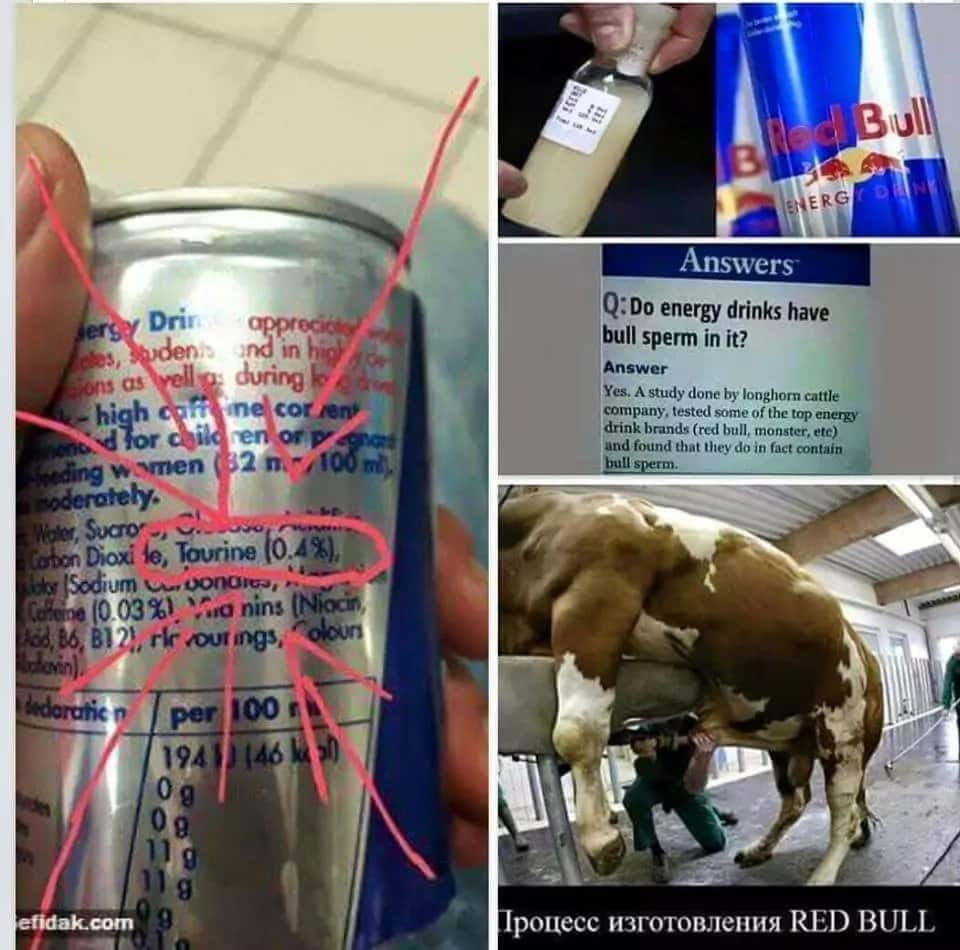
Sucrose, another ingredient you'll often see on energy drink labels, is a combination of fructose (the natural sugar found in fruit) and glucose. Researchers in Finland reported that the caffeine in two to three cups of coffee can cause BP to spike by up to 14 points. On the other hand, if you're not a regular coffee or cola drinker and you battle high blood pressure, the occasional energy drink could be trouble. Of course, if you combine that with other caffeinated beverages throughout the day, then the sum total stimulation could cause headaches, sleeplessness, or nausea.

If downing that much joe doesn't make you jittery, then quaffing a can shouldn't pose a problem. Is it safe?: The most caffeine-packed energy drink contains the equivalent in caffeine of about two 8-ounce cups of coffee. "Caffeine indirectly affects many different neurotransmitters," says Andrew Scholey, Ph.D., an herb and nutrition researcher at Australia's Swinburne University of Technology. Plus, a new University of Chicago study found that a 200 mg jolt made fatigued people feel twice as alert as noncaffeinated participants. As for the science, an Austrian study showed that men who swallowed 100 mg of caffeine had a bigger boost in brain activity after 20 minutes than those who took a placebo. Most energy drinks contain between 140 and 170 milligrams (mg) of caffeine in a 15- or 16-ounce can.ĭoes it work?: Java junkies certainly think so. What is it?: A chemical compound that stimulates your central nervous system.

Play icon The triangle icon that indicates to playīut do these beverages really energize your body and sharpen your mind? Or should you can the energy drinks for good? To help you separate the science from the sales pitch, we analyzed five key ingredients in the market's most popular potions. It's a formulation that includes a hefty dose of caffeine and sugar combined with smaller amounts of seemingly obscure substances, most notably guarana, ginseng, and taurine. And that's probably why manufacturers haven't strayed far from the best-selling recipe they used when the first energy drinks took off a dozen years ago. The approach has worked: Last year, Americans spent $4.2 billion on these supposedly high-octane elixirs. Trouble is, by letting consumer research influence ingredient lists, energy-drink companies are helping popularize exotic-sounding compounds that even scientists don't yet fully understand. Which perhaps in large part explains why the company chose them: It's smart marketing. "There are many energy ingredients on the market, and B vitamins, guarana, and ginseng are the ones our customers are most familiar with," says Ruby Amegah, product-development manager for the team behind the Starbucks Doubleshot Energy + Coffee. At least that's whose opinion mattered most when the coffee giant recently created the ingredient list for its own concoction. No, according to Starbucks, any guy off the street is qualified. Apparently, it doesn't take a biochemist to formulate an energy drink.


 0 kommentar(er)
0 kommentar(er)
